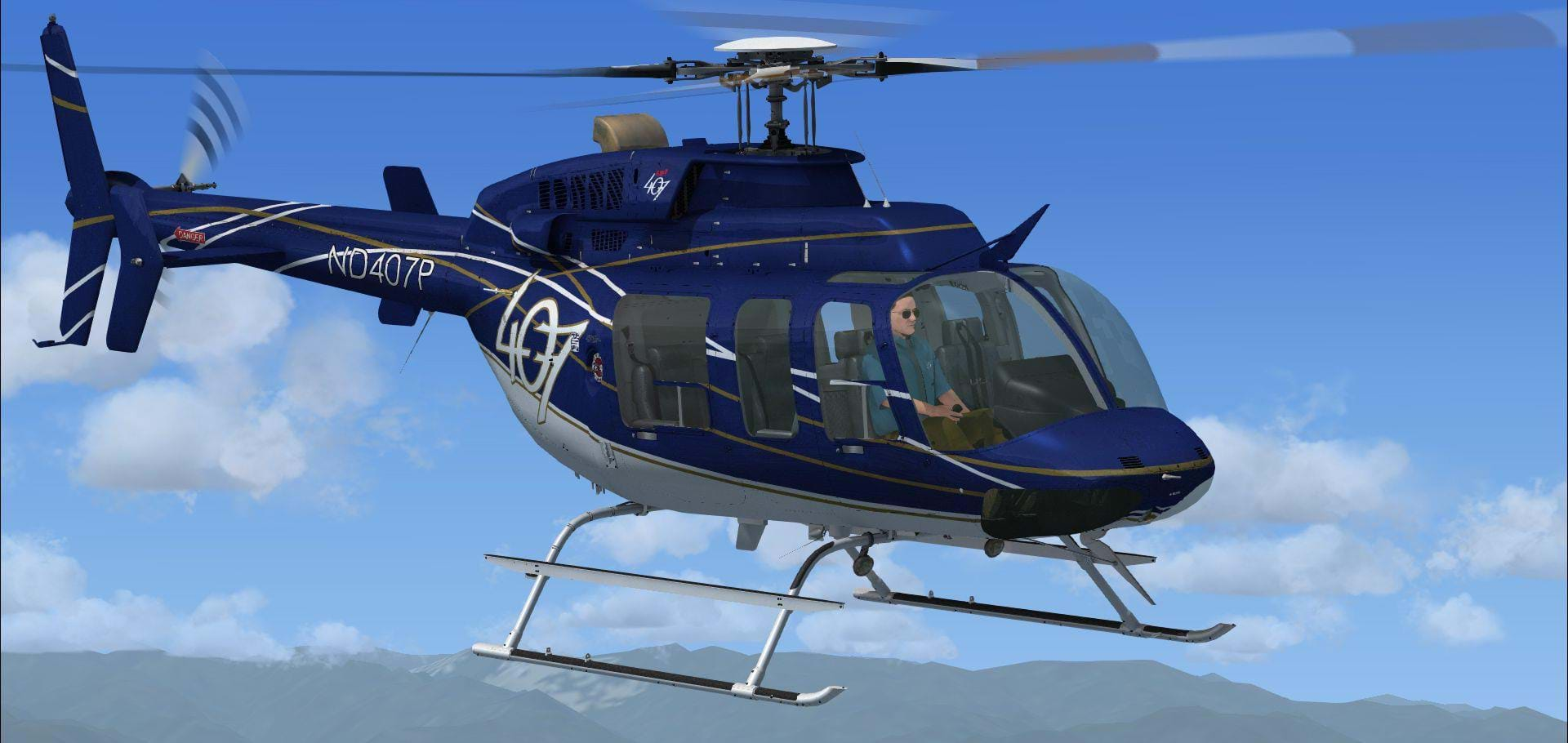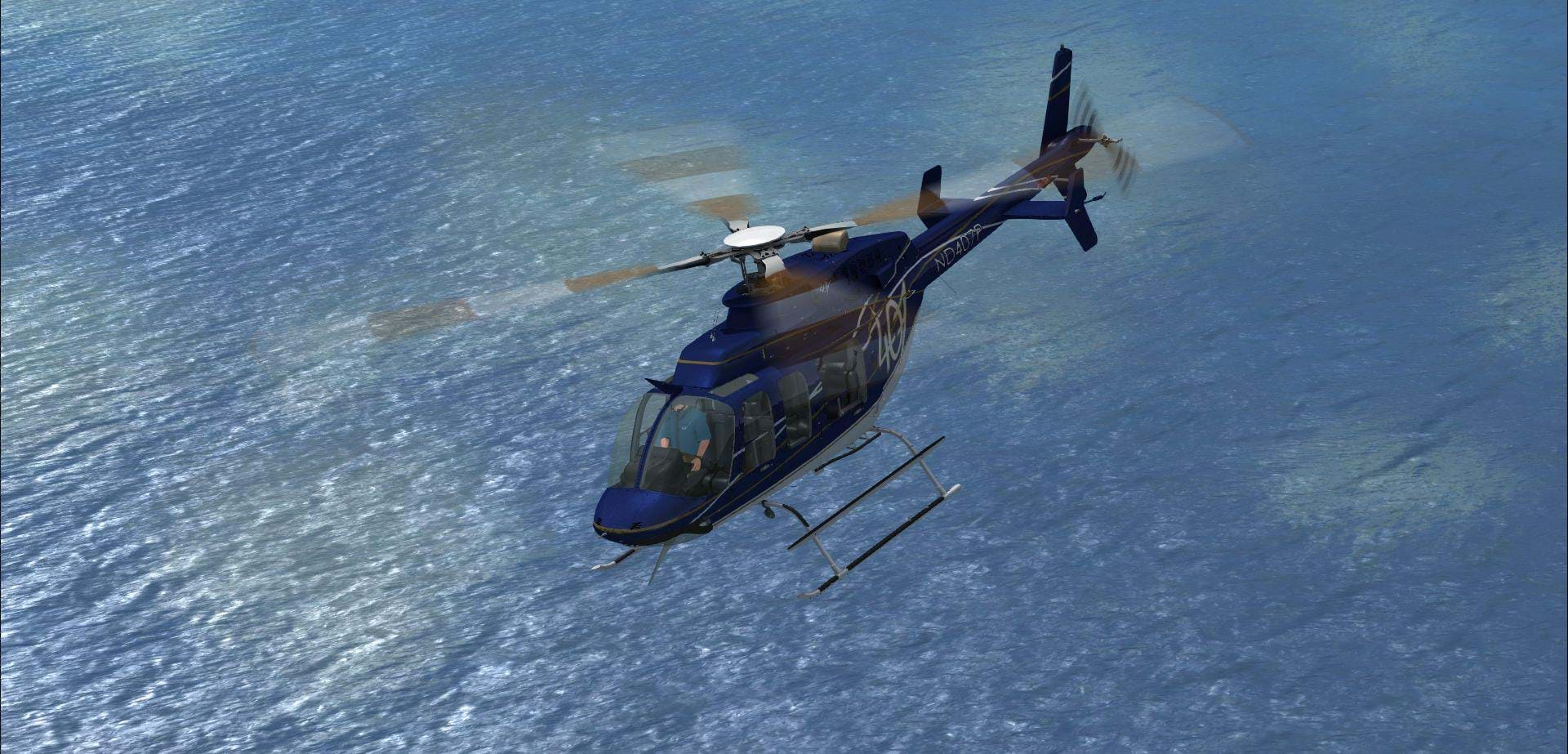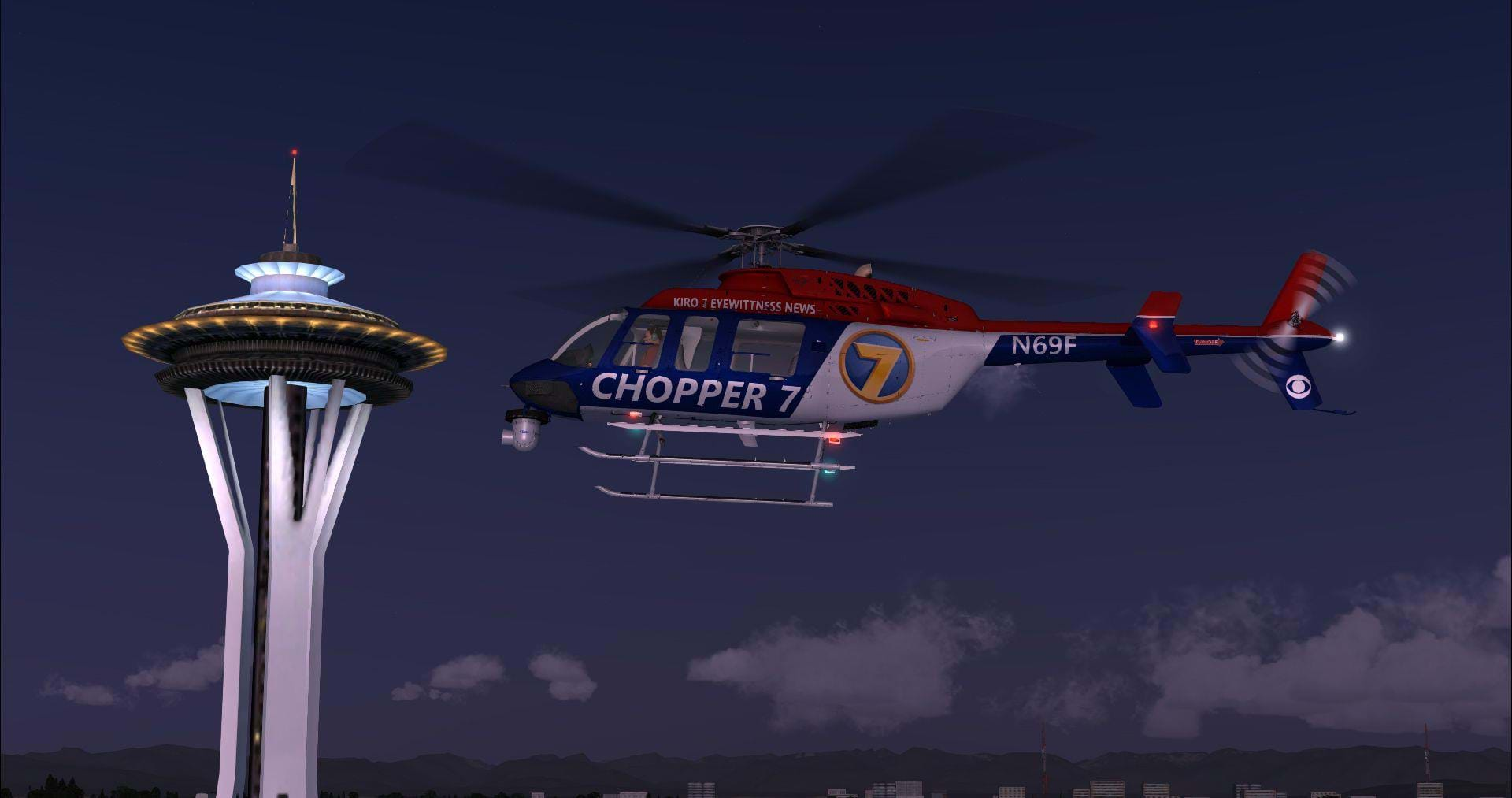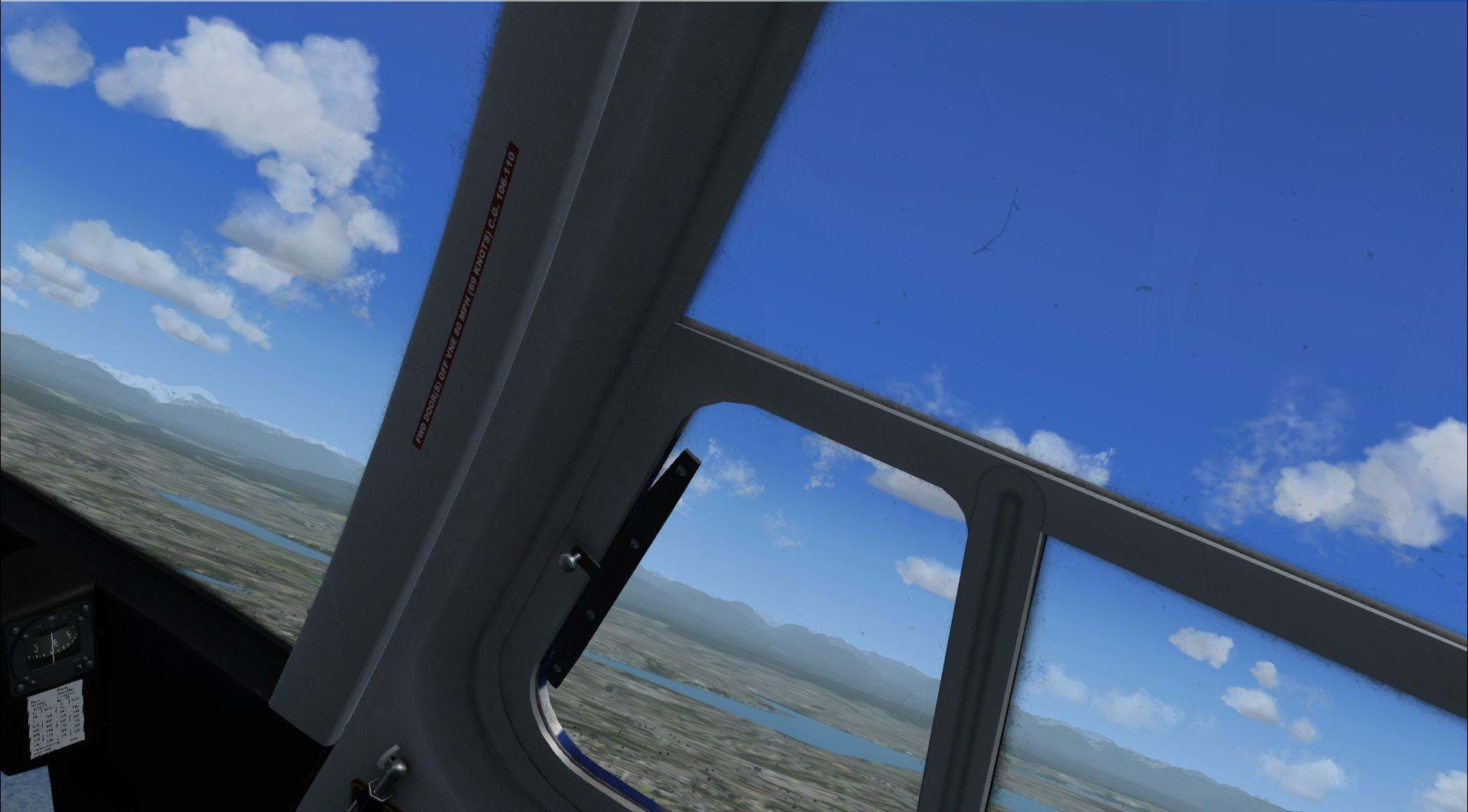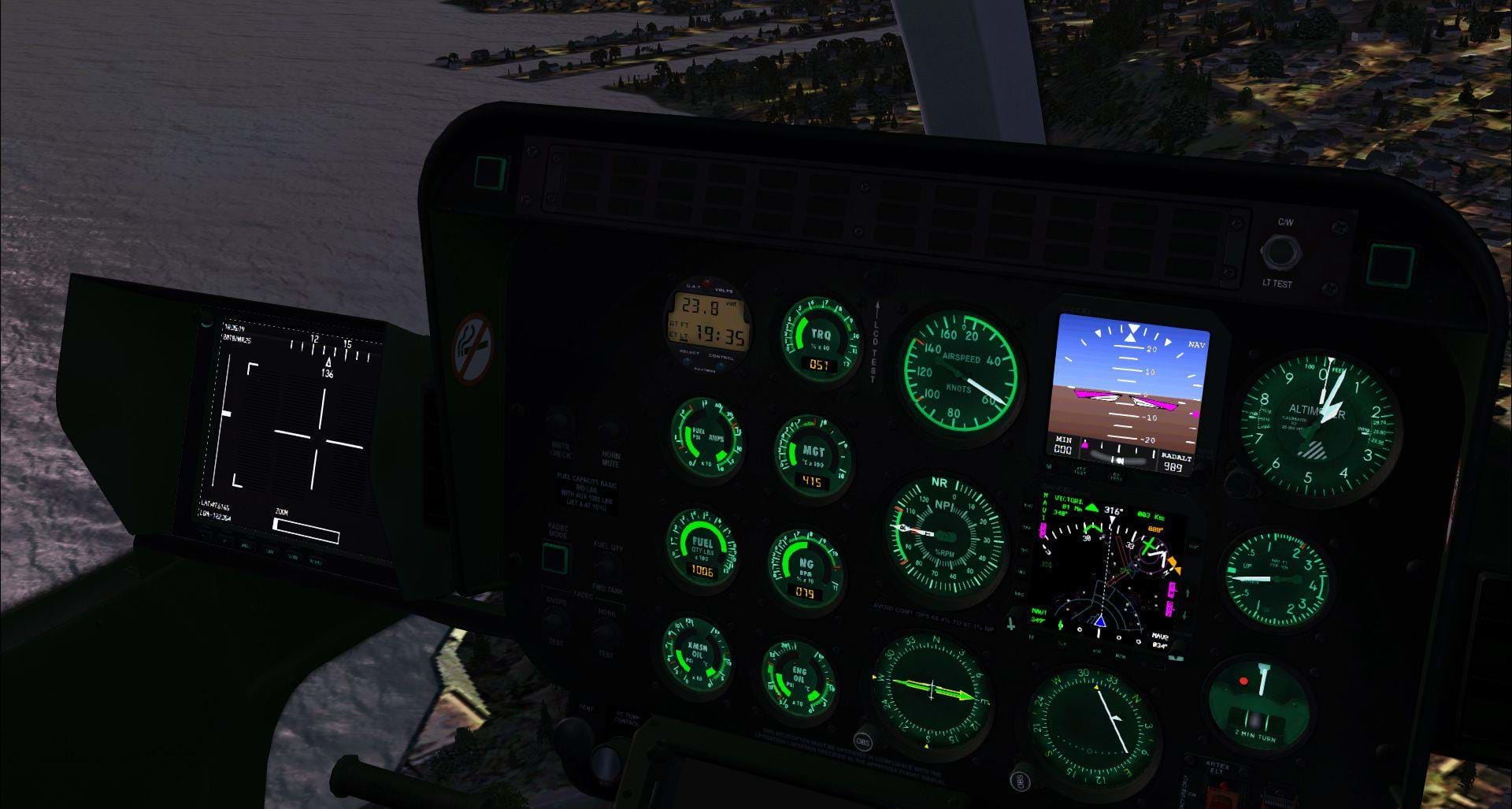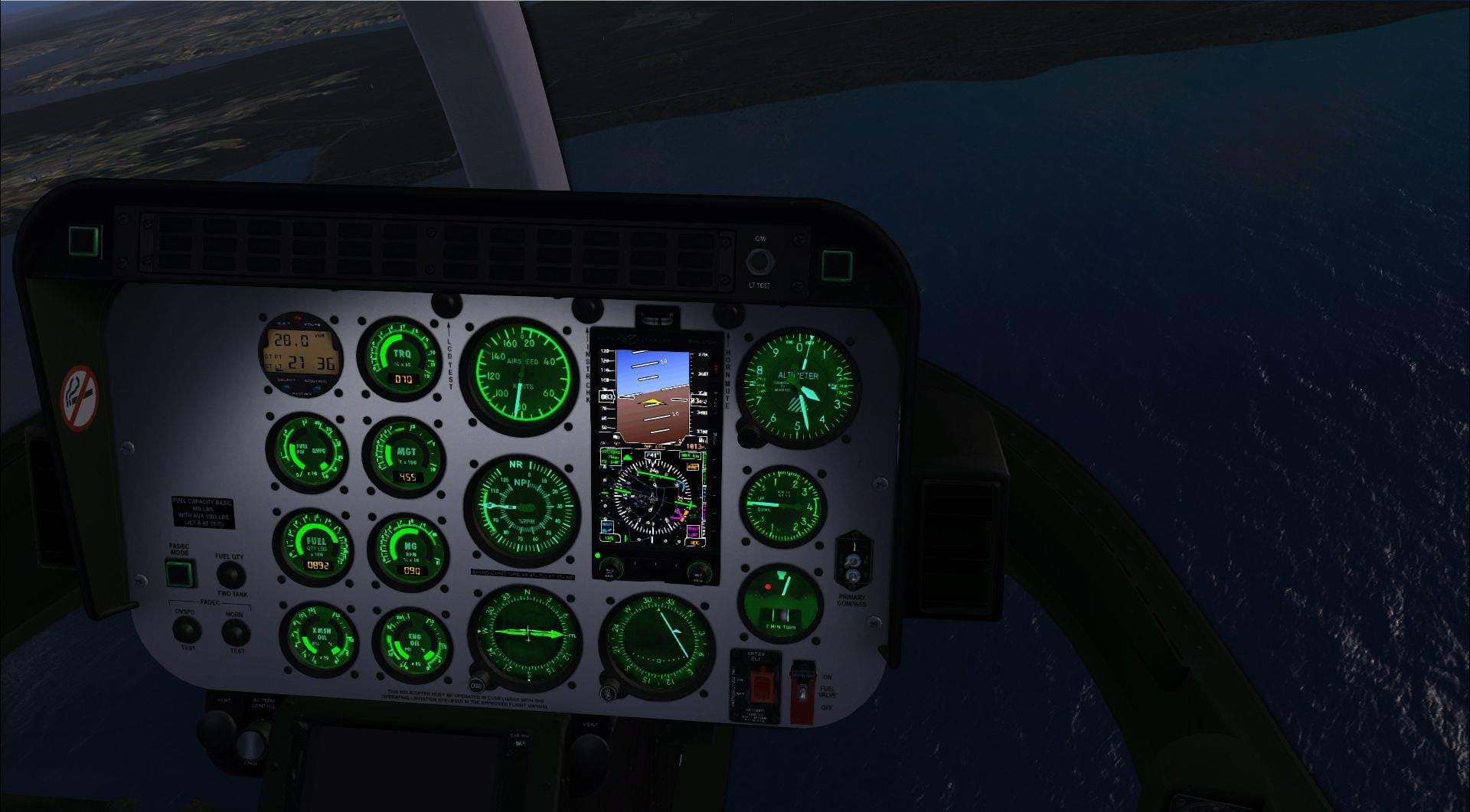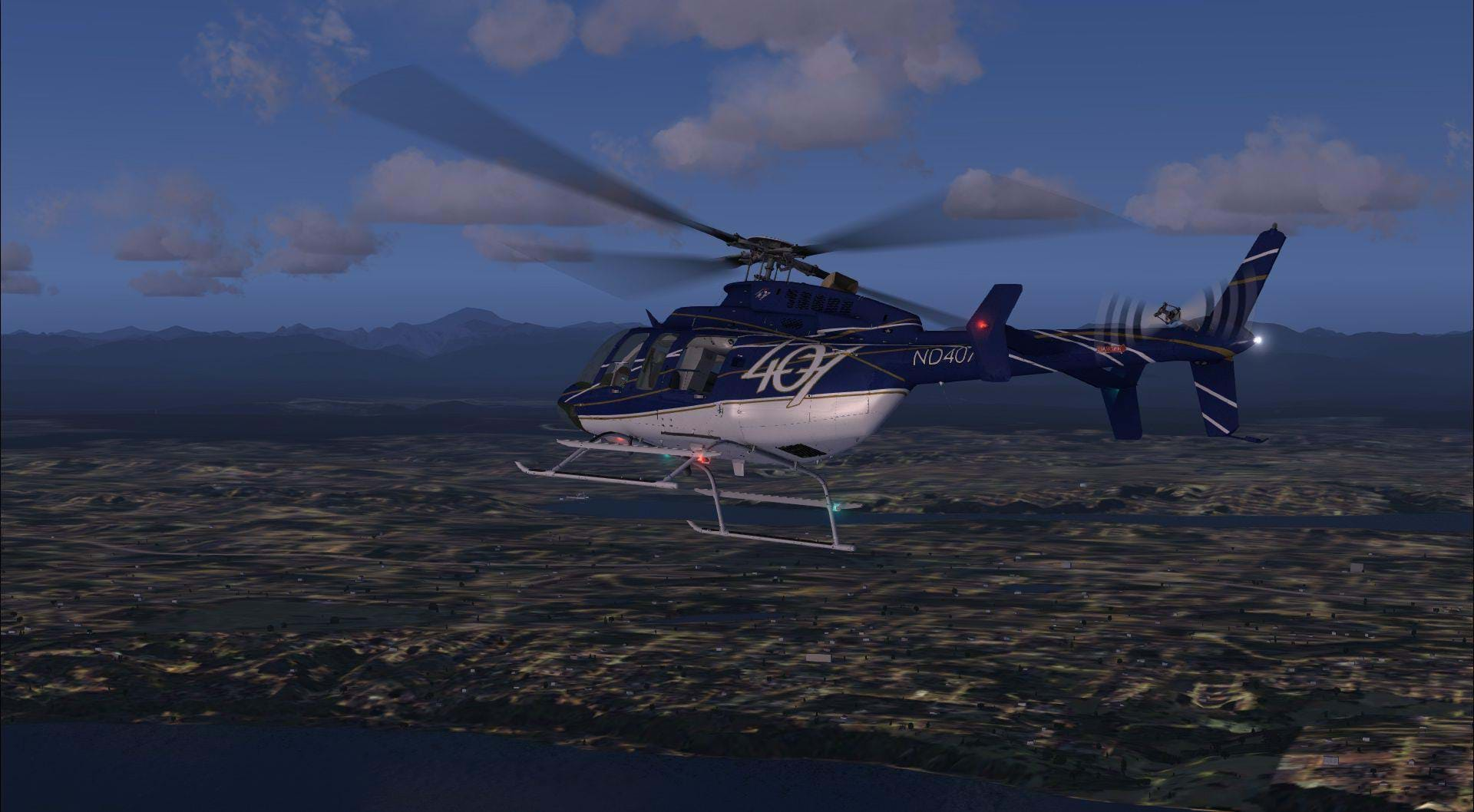After a long hiatus, Peter and Tamas Nemeth have been back in front of the keyboard, diligently catching up and tuning their stock of FSX aircraft for re-releases and updates. We as a community are glad to see them back at it, producing great aircraft. Back before the widespread adoption of P3D, X Plane 11, Flight Sim World and FSX Steam, they were the top of the “must haves” list for helicopter simmers. After a string of re-releases, they have returned with the Nemeth Designs Bell 407 for FSX Steam and P3D.
When I first got into desktop simulators, I played a variety of different products for different reasons. After I first started flying while I was in my teens, I switched exclusively to Microsoft’s product line because it was “As real as it gets,” and that’s exactly what I wanted.
Although, with the closure of Microsoft’s flight sim vessel, FSX and its associated software quickly started to become outdated. As new hardware came online, understandably FSX soon started to be outclassed by other companies that used the time and opportunity to improve it and make flight simulation in general more realistic.
To put it frankly, FSX is lacking in many area’s when it comes to simulating helicopters and for that reason, many of us moved on to better simulators.
That’s a very round-about way of saying that FSX has inherent limitations built into the code that is difficult to over-come and limits developers to reaching their full potential.
On to the review!
I won’t lie – its with trepidation that I booted up FSX:SE and had the familiar monotone lighting and almost monochromatic scenery staring back at me. It was a stark reminder as to why I switched to X Plane and never looked back.
Although, strikingly, the aircraft I was staring at, the Nemeth Designs Bell 407, looked beautiful. I took a few minutes to just linger on the exterior. I’m very familiar with the Bell’s Jetranger “line” of aircraft and have been around, on, and memorized key components of the Bell 206, OH-58D and marveled longingly at the advancements the 407 brought to the helicopter.
So, to load up the ND B407 and see all the panel lines, antennae, rivets, swirl tubes, skid tape and hand holds, I was amazed. I couldn’t stop staring! The interior is even beautifully modeled and textured with seatbelts, leather seats, finger prints on the switches and dirty, scratched windows.
Again, more appreciation for how much work went into the modeling and texturing of this aircraft. The aircraft was cold and dark when I loaded it up. But I quickly breezed through the startup (a modified version of the Bell 407 manual, which was nice) and was welcomed by the dull whine and throaty rumble as the stout Allison 250-C47B turbine started to whir to life behind me.
The sound was spot on thanks to Sonic Solutions wonderful sound modification. Now, with the aircraft at flat pitch (engine running, at idle) is a good time to stop and say that when I do a review, I adhere to a stringent checklist and set of criteria when testing every new aircraft. With that, I started my checklist and methodically worked through the systems.
I know FSX has limitations and for certain aspects, I won’t fault Nemeth Designs – but I’ve flown FSX helicopters for a long time and there are area’s that I was rather disappointed by. The first issue that stood out to me was that (and this is likely operator error), I couldn’t figure out how to map throttle manipulation to the controls.
I utilize a Thrustmaster Warthog and usually set the “friction” slider to the throttle on helicopters because its near the collective and makes it easier to manipulate. I utilized mouse manipulation to roll the throttle up, turn the FADEC off, and then manually manipulate the throttle again (looking for RPM correlation).
Randomly, while manipulating the throttle, the engine would die. I attribute this to a lack of a throttle latch which the actual helicopters have installed. The throttle latch is a spring-loaded detent machined into the throttle sleeve on the collective tube.
When depressing the throttle latch, it allows the pilot to roll the throttle “off” and shut off the fuel flow to the engine. I tried multiple different work-around to get the throttle latch to work but couldn’t get it to work. This made it more difficult to practice emergency procedures later. After getting the engine up to 100% RPM, I pulled the helicopter into a five-foot hover and completed a standard Engine Performance check (Power Assurance Check, Engine Health Check).
The 407 has a chart in the operator’s manual where you cross reference the temperature, pressure altitude, MGT (Measured Gas Temperature) and torque. I noted 565 on the MGT (well within limits) and took off for a traffic pattern. I practiced steep approaches, normal approaches, shallow approaches and run-on landings.
Everything operated as normal with airspeed and torque correlation. But one glaring issue screamed at me through out my time flying this 407 – the flight model. Initially, when learning to fly helicopters, the inherent instability makes it frustrating and difficult for new pilots (as many of you have probably realized). But, as you gain time and experience, the helicopter becomes easier to fly and that inherent instability becomes comfortable.
For the sake of simplicity, I won’t delve into dynamic stability versus static stability but the 407 should fly smoothly. It is a helicopter after all and therefore unstable. But the 407-rotor system has a level of dynamic stability that makes it smooth to fly. The Nemeth Designs 407 was too stable. It felt like I was trying to fly the helicopter through syrup.
Before being too critical, I checked my control settings and verified that the sensitivities were turned all the way up. I even re-calibrated my joystick. Although, despite all these changes, the helicopter was still too stable. I know some readers might read this and think, “Hey, easy isn’t a bad thing!” And they would be right to a degree. Once a pilot learns to fly a helicopter, they shouldn’t be too hard – but that doesn’t make them any easier to fly.
What makes them easier to fly is that the pilot learns to anticipate control inputs and the brain and muscles learn to recognize and correct variances in the rotor disc prior to manifestation in the flight profile. Although, when necessary, the pilot can utilize that instability to fly the helicopter more efficiently.
When there is a greater variance in the “stability” of the helicopter, it makes it more difficult for a pilot to switch to something easier. At first, I figured since the collective friction is modeled, the cyclic friction was probably modeled as well. So, I craned around and tried in vain to disable cyclic friction which (apparently) isn’t modeled. I verified force trim was turned off and still saw no change in the flight controls.
After exhausting all other options, I was stuck. The helicopter just didn’t fly well, and it was so disappointing. I know part of this isn’t ND’s fault, there is only so much they can do in FSX. But I know there are flight models out there for FSX that are far more superior.
I moved on to trying out emergency procedures and really trying to see how deep the FSX code would let the developers get. I noticed that hydraulics off didn’t fly any differently than with the hydraulics on. With the hydraulics system in the Jetranger line, it’s a fail-safe ON system.
The pilot must use the switch to electrically disconnect the hydraulics system to turn it off. This way, if the switch failed, the hydraulics would default to an ON condition. The hydraulics deck is located just above the pilot and co-pilots head and flight control inputs from the flight controls are routed through cyclic, pedal and collective tubes, to bell-cranks (a 90-degree juncture) up to an inter-mixing bell crank which combines all the inputs – to the hydraulic actuators.
There, hydraulic fluid which is kept under pressure through several manifolds, sends the boosted inputs to the swash plate. When turning the hydraulics switch OFF in the cockpit, an electrical connection opens which isolates the hydraulic actuators from the flight control inputs. Now, the pilot is “pushing through” the actuators to make inputs to the swash plate. The issue that the pilot encounters is that with hydraulics off, now they are trying to make control inputs through the intermixing bell crank.
This means that any movement of one control will affect all the other controls. As an example, collective inputs will independently move the cyclic (which is fun to watch if you get a chance) and same with the pedals. It sucks trying to fly hydraulics off but its not impossible. The 407 didn’t fly any differently. I can test that by pulling the helicopter into a hover, leaving one control “centered” and make inputs to other controls. There was no inter-mixing correlation between individual controls.
Falling into auto rotations I noted a few issues. The first issue was that I consistently rolled the engine OFF (no throttle latch) and accidentally killed the engine. Then, at the bottom of the auto’s I tried recoveries from different altitudes to test recovery characteristics.
First, I tried autos at a normal operating weight (3000-5000 pounds) and then fully loaded (6000 pounds) and then empty. I did this for a few reasons; with more gross weight, the disc will have to cone more at the bottom as I applied collective to cushion for landing.
Autorotative rotor RPM is based on several factors. Gross weight, density altitude, airspeed and aircraft rigging. During the auto, I can control airspeed. I cannot affect gross weight, density altitude and rigging. Within my acceptable autorotative airspeeds, flaring and recovery should be a simple task.
With an adequate flare and smooth technique, even a fully-loaded 407 shouldn’t be a rush at the bottom of an auto rotation. Although, despite my variances in gross weight (and even flare altitudes), there was no discernable difference in rotor decay rate at the bottom.
Rather, the helicopter would float, and then continue to float until I set the helicopter down. Eventually, rotor RPM decayed to a point where the helicopter settled onto the tarmac, but I think the correlation isn’t possible in FSX or wasn’t modeled very well.
Avionics – Fancy lights and pretty colors
This helicopter has more avionics choices and options than a Best Buy. Seeing the integration of some newer technology into a 407 as so refreshing! I would pay damn good money to see a 407GX released but until that happens, the avionics suite in the ND 407 is the next best thing.
The ND 407 has provisions in it for a few different avionics stack options and two panel options. The stack, you can configure different transponders or even a giant screen Garmin GPS. With the panel-mounted, you can choose between the Aspen Avionics Evolution 1000 or the Sandel SN4500.
Both options give the pilot lots of information including moving maps, weather and radar altimeter functions in addition to the standard navigation suite. I felt like the avionics integration was a leap forward in terms of usability. I appreciate seeing digital integration in flight sim helicopters.
Several pay-ware planes and even X Plane default planes come with digital, glass cockpits but the options are surprisingly sparse in simulator helicopters. But again, like some of the other issues I’ve already mentioned, this feature comes very close to a great thing but just falls a tad short.
I’ve noticed in simulators that just due to the scaling and perspective, we often cope with instrumentation that is depicted smaller than it would really be in an actual aircraft (so we can see it easily at a glance). The digital cockpit is wounded from this alone. Functionality of the integrated features was well implemented but the displays were small, and information was cluttered. For sim pilots who might have some issues with their eyesight, this could lead to these instruments going un-used or just for basic information alone.
Trying to interact and see what soft key I was pressing on the bezel was trying and frustrating. Before I knew it, I had several needles dragging me all over Seattle!
Short Final…
The hard work that Nemeth Designs put into this helicopter is glaringly obvious and greatly appreciated. It was nice flying the 407 and having an updated pilot model sitting in the cockpit (this one looks like he might have to shave unlike the 12-year-old flying the other iterations of a 407 3D Model).
All those little details, which are better seen in the pictures, make this such a desirable aircraft to have. But the short-comings and nuances of the flight model make it difficult to love it. The 3D model and textures are some of the best I’ve ever seen in any add-on aircraft. It was refreshing to see the love put into a helicopter that is overly-abundant in fixed-wing pay-ware.
When comparing it, I would say that the level of detail in the texturing and 3D model fidelity is on par and at times, beyond the work Carendo and Avsim. But it was so difficult to enjoy it using FSX and sadly, the handling of the helicopter made it hard to even want to interact with it because it was so heart-breaking.
Although, for those sim pilots out there that are not terribly concerned with the minutia detail of the flight model and still enjoy FSX, this add-on has its worth. For casual simulator pilots that don’t want to work too hard to enjoy the sim or may even be new to flying helicopters, this might be a decent transition into helicopter flight.
For sim pilots that are looking for something that is as close to accurate as possible or even real pilots, this add-on might be to frustrating.

